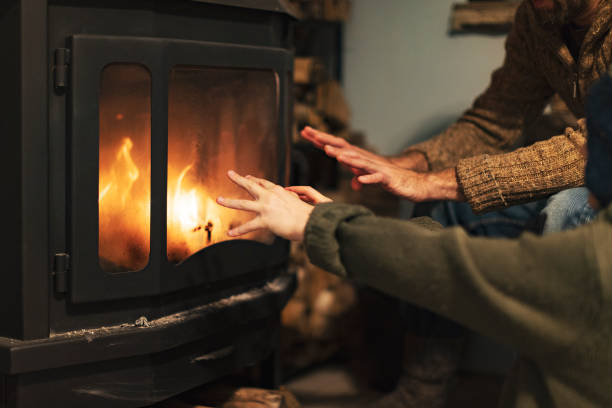
The crackle of a flame, the warmth enveloping the room, and that timeless, cozy ambiance—nothing quite emulates the charm and comfort brought by a home fireplace. But when it comes to choosing between a wood-burning and a gas fireplace, where should you pivot your decision? Should you lean towards wood, brimming with tradition and rustic appeal? Or consider gas, a modern, hassle-free solution to heating your home? In this comprehensive comparison – we’ll together unravel the mystery between gas versus wood-burning fireplaces.
Drawing from my years of experience in home design and improvement, I will guide you through the essential points to consider before making your choice – energy efficiency, maintenance needs, aesthetic allure, comfort, and of course, the cost.
Are you ready for an in-depth exploration into this heated topic? Stay put, as we probe further into the fascinating world of fireplaces, revealing the strengths, weaknesses, and distinct characteristics of both gas and wood-burning fires.
History of Fireplaces: Evolution of Warmth
The first fireplaces crafted by humans were rudimentary—stone layers for containing fire, simple chimneys for venting smoke. But with time, inventiveness and technology seeped in, leading to innovative fireplace designs with increased practicality and aesthetic appeal. With wood being easily accessible, wood-burning fireplaces dominated until the mid-20th century when gas fireplaces started gaining popularity.
The advent of gas fireplaces brought forth never-before-seen convenience, ease of operation, and efficiency, challenging the supremacy and romantic allure of traditional wood-burning fireplaces.
Today, with the rise of eco-consciousness, energy-efficiency, and a clear, uncluttered finish have become paramount, presenting an interesting conundrum to homeowners – which hearth do they bring home?
Wood-Burning Fireplaces: Old World Charm
The unmatched nostalgia evoked by wood fireplaces – the crackling sound, the smell of burning wood – is an experience in itself. A wood-burning fireplace can transform an ordinary room into an inviting, comfortable haven draped in a rustic aura.
However, they require regular maintenance, including annual chimney sweeps to avoid dangerous creosote build-up. And acquiring, storing and stacking wood can be labor-intensive. Despite these, the unparalleled ambiance they offer oftens make homeowners overlook these challenges.
Gas Fireplaces: The Modern Preference
Gas fireplaces, on the other hand, marry convenience with cleanliness. They’re typically ignited with a switch, heat rooms quickly, and require less maintenance than their wood counterparts. Their sleek design gels seamlessly with modern interior décor, expressing a neat and uncluttered vibe.
However, gas fireplaces can’t replicate the all-sensory experience of a wood fire. And while they’re usually energy-efficient, rising gas prices might make them less economical in the long run.
Energy Efficiency: Wood vs. Gas
When it comes to energy efficiency, gas fireplaces have the edge, as they convert most of their fuel into useful heat. Wood fireplaces lose much of their heat through the chimney and the relative inefficiency of burning logs.
Considering Costs: Initial and Long-Term
Considering costs, installing gas fireplaces can be more expensive initially due to the need for a gas line. However, maintenance and operational costs tend to be lower compared to wood-burning models. Conversely, wood fireplaces entail lower installation costs but higher maintenance and operational expenses.
Environmental Impact
Wood-burning fireplaces produce smoke and particulates that can impact air quality. Conversely, gas fireplaces produce fewer emissions, making them a relatively environmentally friendly choice.
Conclusion:
In conclusion, the choice between a gas and wood-burning fireplace boils down to personal preference. If you desire efficiency, cleanliness, and convenience, a gas fireplace might be your best bet. But if you yearn for the enchanting experience of a crackling, scent-filled hearth and can deal with the maintenance, you might find yourself leaning towards a traditional wood-fired fireplace.
Both kinds carry their unique charm that can enhance any living or recreational space, making your home cozier and more inviting. As such, the decision isn’t about which type is inherently superior—it’s about which one is right for you and your home. One thing remains certain – whichever you choose, the magic of the dancing flame in your hearth will forever captivate you, making your house truly feel like home. Your fireplace, your choice, your home.






